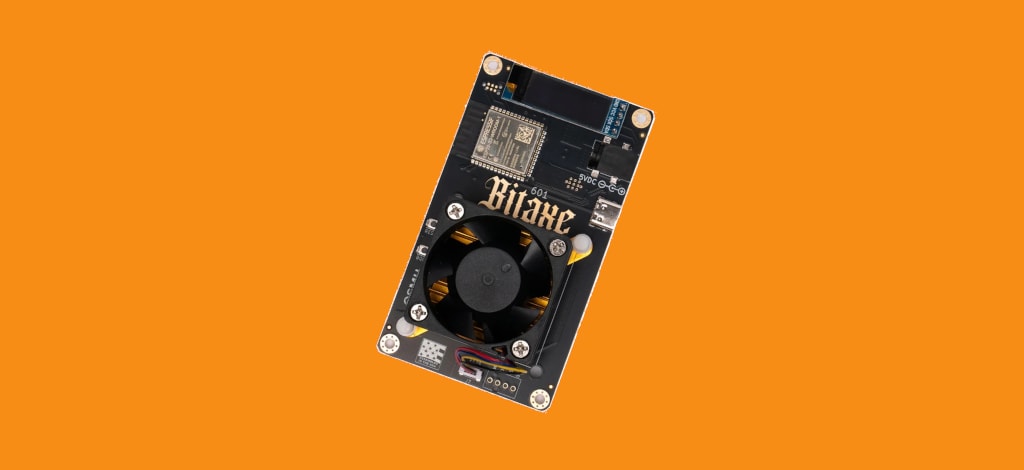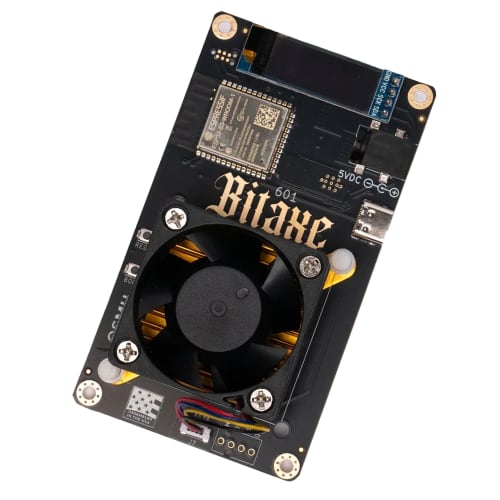
Solo mining the future
Why Bitaxes will revolutionise the future of Bitcoin mining
In the early years of Bitcoin, in order to get up and running users had to run both the Node and Miner on their machine. It was quite possible back then to run the entire operation on a laptop. Competition among miners was relatively low. This meant that even with less powerful hardware, miners could still earn a substantial number of bitcoins. The network difficulty was low, making it easier to find blocks and earn rewards.
The early Bitcoin community was tight-knit and collaborative. Miners often shared information and strategies, and there was a strong sense of camaraderie. This collaborative spirit helped the network grow and attract more participants.
Bitcoin mining was characterised by simplicity, accessibility, and a spirit of innovation. As the network grew and the value of Bitcoin increased, mining evolved into a more complex and competitive industry.
As the difficulty of mining increased, miners moved from CPUs to Graphics Processing Units (GPUs). GPUs were more efficient at performing the calculations required for mining, allowing miners to earn more bitcoins. This shift marked the beginning of more specialised mining hardware.
The evolution of Bitcoin mining from CPU and GPU mining to ASIC (Application-Specific Integrated Circuit) mining was driven by the increasing difficulty of the mining process and the quest for greater efficiency and profitability.
The breakthrough came with the development of ASICs, which are custom-built chips designed specifically for Bitcoin mining. The first ASIC miner, the Avalon, was released in 2013. ASICs were far more efficient than GPUs and FPGAs, offering significantly higher hash rates and lower power consumption.
Once ASICs entered the market, they quickly became the dominant form of mining hardware. Their superior performance made them the go-to choice for serious miners. This shift led to a rapid increase in the network's hash rate and a corresponding increase in mining difficulty.
As the demand for ASIC miners grew, several companies entered the market, including Bitmain, Canaan, and MicroBT. This competition drove innovation and led to the development of more advanced and efficient ASIC models, such as the Antminer series from Bitmain.
The rise of ASIC mining also raised concerns about the centralisation of the Bitcoin network. Large mining operations with access to cheap electricity and the latest ASIC hardware began to dominate the network, potentially threatening Bitcoin's decentralised nature.
The high cost of ASIC hardware and the need for cheap electricity to operate them economically meant that mining became a more capital-intensive endeavour. This further contributed to the centralisation of mining power in the hands of those with significant financial resources.
The shift to ASIC mining has had a profound impact on the Bitcoin network's decentralization. While ASICs have made mining more efficient, they have also led to a concentration of mining power in the hands of a few large players, raising questions about the network's resilience and security.
The rise of Bitaxe
The Bitaxe came about as a result of a grassroots movement in the Bitcoin mining community, driven by the desire to create an open-source, affordable, and efficient Bitcoin mining device. The project was initiated by Skot, an electrical engineer and Bitcoin enthusiast, who noticed a gap in the market for open-source home miners. Skot began by deconstructing and reverse-engineering Bitmain’s Bitcoin mining machines to understand their inner workings. This process led to the creation of the first open-source ASIC-based Bitcoin mining machine, known as the Bitaxe, in early 2023.
The Bitaxe is starting to usher in a brighter future fore Bitcoin mining. These compact, open‑source devices use modern ASIC chips to deliver substantial hashpower with very low energy draw. In practice, a Bitaxe unit draws only 12–18 watts – comparable to small LED light bulb. This means running a Bitaxe full-time adds only a few pounds a month to your electricity bill. By combining low cost, easy setup, and high efficiency, Bitaxe miners make home Bitcoin mining practical for enthusiasts and hobbyists.
Decentralisation of Bitcoin Mining
One of the core driving objectives of Bitaxe, is an attempt to decentralise mining operations.
The precarious position Bitcoin has found itself in as of late, is that most of the hashpower is concentrated in a few large pools – with the top six controlling around 90% of the network. This level of centralisation poses risks for censorship and security.
Bitaxe counters this by putting hashpower back into the hands of individuals.
Lottery Mining
Bitaxe encourages solo mining – also known as Lottery Mining. Instead of sharing pool rewards, a solo miner has a slim but real chance to win the entire block reward. While the odds are low, the payoff is significant.
Over the course of July 2024 - July 2025, there have been two cases, where , a small solo miners earned 3.15 BTC (worth over £200,000) by finding a block alone. Bitaxe actively promotes this “lottery” opportunity. There are no pool fees – all rewards go straight to you. This high-variance potential excites many hobbyist miners.
Discover the thrill of solo mining, where independence meets potential for substantial rewards. Solo mining empowers you to take full control of your mining operations, deciding which transactions to include in a block and when to start or stop mining. This method is perfect for those who value freedom and want to keep 100% of their mining rewards, avoiding the fees and shared payouts of pool mining.
Open Source
Bitaxe is fully open-source hardware. All schematics, PCB designs, firmware, and documentation are available publicly. Enthusiasts can inspect, improve, or modify anything – from flashing custom firmware to designing their own variants.
- Open hardware and firmware: Full source code and design files are available
- DIY-friendly: Users can build Bitaxe kits or flash their own firmware
- Community-powered: A vibrant open-source community contributes fixes and upgrades
This level of transparency and control matches Bitcoin’s ethos. For tinkerers and educators, Bitaxe is both a miner and a learning tool.
Conclusion
Bitaxe miners represent a fresh approach to Bitcoin mining – one that’s efficient, decentralised, and accessible. Their tiny power draw, quiet running, and compact design remove many of the traditional barriers to entry. With low prices, simple setup, and open-source flexibility, Bitaxe gives individuals a real stake in securing the network. As one supporter puts it, choosing Bitaxe makes mining “more accessible, transparent, and decentralised.” For anyone curious about mining, Bitaxe offers a fun and practical way to get involved – potentially shaping the future of small-scale Bitcoin mining.
How to run a Bitcoin Node with Umbrel Home
The ultimate personal server for running a home cloud. Run self-hosted apps like Nextcloud, Jellyfin, Bitcoin node, and more in one click with no technical skills required
What is solo mining
explore what solo mining is, how it works, advantages and disadvantages, and why you may want to venture into the world of solo mining

